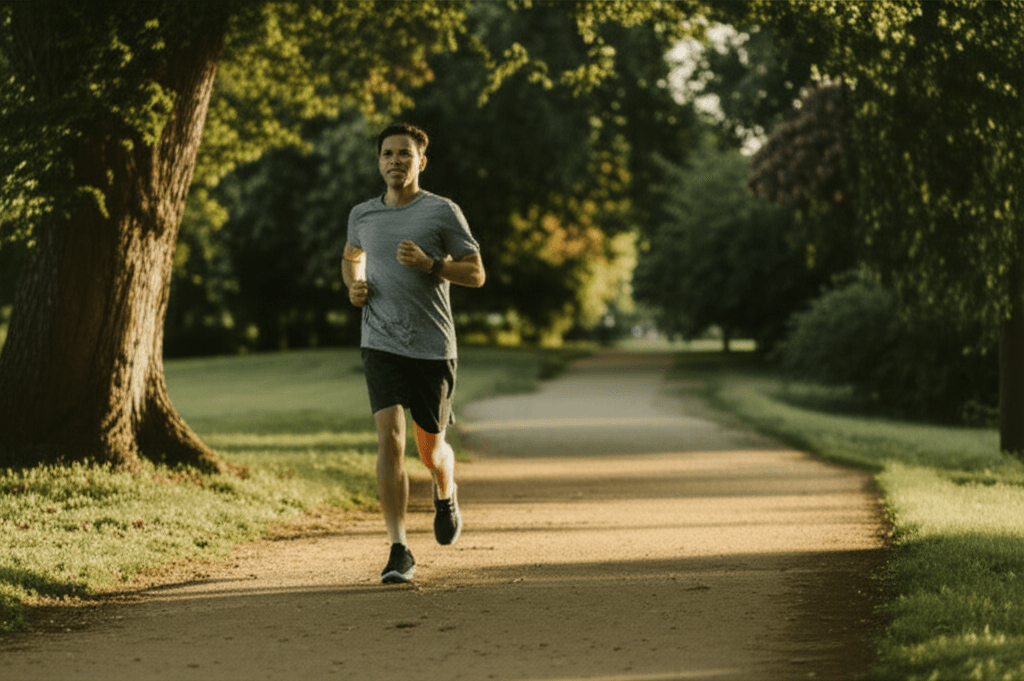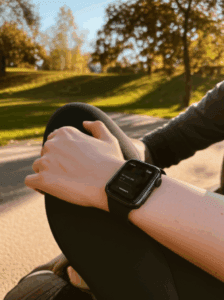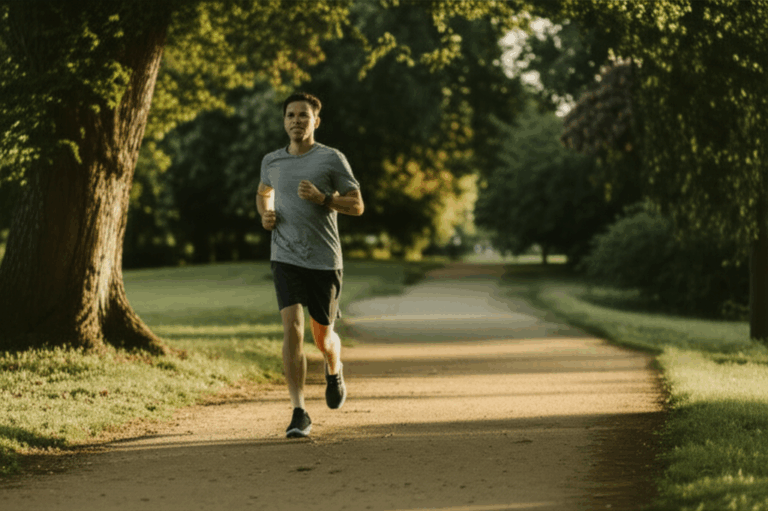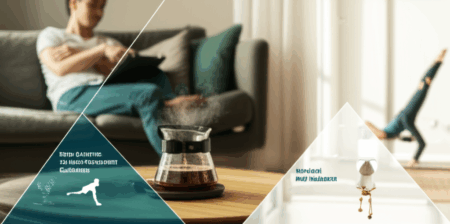Physical exercise is universally recognized as a cornerstone of overall health, offering profound benefits that extend far beyond physical fitness to encompass comprehensive mental well-being. Mounting scientific evidence underscores its role in the prevention and management of a wide array of chronic diseases and psychological conditions. However, the mechanisms underlying these powerful effects are complex, involving intricate pathways that can be understood through the lens of mediation and moderation. This article delves into the direct impacts of physical exercise on both physical and mental health, and critically examines the mediating and moderating factors that shape these crucial relationships.

The Direct Impact of Physical Exercise on Health
Regular engagement in physical activity yields substantial and undeniable benefits across both physical and mental domains, contributing significantly to a healthier and longer life.
Physical Health Benefits
From a physiological perspective, consistent physical exercise is a potent tool for disease prevention and physical enhancement. It is strongly associated with a reduced risk of major illnesses, including coronary heart disease, stroke, type 2 diabetes, and certain cancers such as bowel and breast cancer. Exercise contributes to maintaining a healthy weight by burning calories and improving metabolism, thereby helping to prevent excess weight gain or facilitate weight loss. Regular physical activity also significantly boosts high-density lipoprotein (HDL) cholesterol, often referred to as “good” cholesterol, while decreasing unhealthy triglycerides, promoting smoother blood flow and reducing the risk of cardiovascular diseases.
Beyond disease prevention, physical exercise enhances various components of physical function. It improves muscle strength, flexibility, balance, and endurance, which are crucial for daily activities and maintaining independence, particularly as individuals age. For older adults in residential care, exercise interventions have been shown to significantly improve overall physical function across various outcomes, including mobility, strength, and balance. Furthermore, regular physical activity reduces the risk of osteoarthritis, hip fractures, and falls among older adults, reinforcing its critical role in healthy aging.
Mental Health Benefits
The positive influence of physical exercise on mental health is equally compelling. Regular physical activity is a non-pharmacological approach that significantly reduces symptoms of depression and anxiety, and can even match the effectiveness of psychotherapy or medication with fewer adverse effects for some individuals. It acts as an effective stress reliever, helping individuals cope with daily stressors and mitigating negative emotional states.
Beyond alleviating distress, exercise actively promotes positive mental states. It is known to improve mood, boost self-esteem and body image, and enhance overall quality of life. Regular physical activity has been linked to improved sleep quality, which is intrinsically tied to both mental and physical well-being. Moreover, exercise can improve cognitive functions, playing a vital role in preserving psychological well-being and reducing the risk of neurodegenerative diseases, with findings related to neurogenesis induced by physical effort directly connected to improved cognitive functions.

Understanding Mediation Effects in Exercise and Health
Mediation explains how or why an effect occurs. In the context of physical exercise and health, a mediator is a variable that transmits the effect of exercise (the independent variable) on physical or mental health outcomes (the dependent variables).
Psychological and Social Mediators
Several psychological and social factors have been identified as mediators in the relationship between physical exercise and improved health outcomes:
Life Satisfaction
Life satisfaction has been shown to partially mediate the positive effects of physical exercise on both physical and mental health. This suggests that a part of the beneficial impact of exercise on overall health is channeled through an increased sense of contentment with life. For instance, enhanced physical and mental health derived from exercise can lead to greater life satisfaction, which in turn reinforces positive health outcomes.
Belief in Benefits of Physical Activity
An individual’s belief in the psychological benefits of physical activity can mediate the relationship between exercise intensity and reduced symptoms of depression and anxiety. More intensive physical activity can strengthen this belief, which subsequently leads to lower levels of psychological distress. This highlights the importance of mindset and perceived effectiveness alongside the actual physical engagement.
Self-Efficacy and Enjoyment
Self-efficacy, or an individual’s belief in their capacity to execute behaviors necessary to produce specific performance attainments, is a crucial mediator. Exercise can enhance self-efficacy, which then contributes to improved mental health and greater persistence in physical activity. Similarly, the enjoyment derived from physical activity can partially mediate the effectiveness of interventions aimed at increasing leisure-time physical activity.
Affect Regulation
The ability to regulate one’s emotions, particularly through exercise-specific affect regulation (e.g., self-control for exercise), has been found to mediate the effects of aerobic exercise on mental health. Positive affect, the experience of pleasurable emotional states, can also partially mediate the relationship between higher levels of physical activity and lower levels of psychological dysfunction. This suggests that the positive feelings experienced during and after exercise contribute to improved mental well-being.
Social Support and Interaction
Physical exercise, especially when performed in group settings, can increase social networks and enhance social support. This increased social interaction and perceived social support can mediate the positive effects of exercise on mental health by reducing feelings of isolation and loneliness. The social interaction hypothesis posits that social engagement derived from exercise directly contributes to mental well-being.
Body Image
For adolescents, physical activity plays a mediating role in the relationship between body image perception and low mood. Engaging in physical activity can enhance self-acceptance and reduce negative emotions related to body image, thereby mitigating the impact of negative body perception on mood.
Biological and Physiological Mediators
Beyond psychological and social mechanisms, exercise influences health through various biological and physiological pathways:
Neurobiological Mechanisms
The positive effects of exercise on mental health are partly explained by neurobiological mechanisms. Exercise is known to stimulate the release of endorphins, often termed “feel-good” chemicals, and serotonin, which play a role in reducing symptoms of depression and anxiety, and improving mood. It also helps in the reduction of stress hormones and can improve the functioning of the hypothalamus-pituitary-adrenal (HPA) axis, which is central to the body’s stress response. Furthermore, exercise promotes neurogenesis—the growth and development of nervous tissue—which is directly linked to improved psychological and cognitive functions.
Improved Sleep Quality
Regular physical activity contributes to better sleep patterns. Improved sleep, in turn, is a critical mediator for both physical and mental health, as adequate and quality sleep profoundly impacts mood, cognitive function, and physical recovery.

Exploring Moderation Effects in Exercise and Health
Moderation describes when or for whom an effect is strongest or weakest. A moderator variable influences the strength or direction of the relationship between physical exercise and health outcomes.
Demographic and Social Moderators
Individual and social characteristics can significantly moderate the impact of exercise:
Social Class
Research indicates that social class can act as a negative moderator. The positive effects of physical exercise on both physical and mental health tend to decrease as social class increases, suggesting that the benefits of exercise might be more pronounced for individuals in lower social strata or urban residents compared to rural residents. This implies that different approaches to promoting exercise might be needed across socioeconomic groups to maximize public health impact.
Gender
Gender can moderate the effects of exercise, particularly on mood. For instance, some studies suggest that women may experience more significant mood improvement in the domain of exhaustion compared to men after exercise. When it comes to specific types of exercise for depression, strength training has been found to be more effective for women, while yoga or qigong showed greater effectiveness for men.
Age
The effectiveness of certain exercise modalities can be moderated by age. For example, yoga has been found to be somewhat more effective for older adults in reducing depression symptoms, whereas strength training showed greater effectiveness among younger individuals.
Exercise-Specific Moderators
Characteristics of the exercise itself can moderate its health impacts:
Exercise Intensity
The intensity of physical activity is a significant moderator. The benefits derived from exercise, particularly for addressing depression, tend to be proportional to the intensity prescribed, with vigorous activity often leading to greater improvements. Both workout duration and the level of exertion significantly moderate mood improvement, with increases in either generally corresponding to greater positive shifts in mood.
Exercise Type and Modality
The specific type of exercise can moderate its effects. For depression, modalities such as walking or jogging, yoga, strength training, and dancing have been identified as particularly effective. Furthermore, engaging in group-based exercise or exercising in outdoor environments can positively moderate subjective well-being.
Context of Activity (Leisure vs. Aerobic Fitness)
One study found that participation in leisure physical activity, as opposed to the level of aerobic fitness, was more important as a moderator of the stress-buffering effect against physical symptoms and anxiety. However, this moderating effect was not observed for depression. This distinction suggests that the psychological benefits of exercise may sometimes stem more from the act of engaging in enjoyable leisure activity than from achieving a specific level of physical fitness.
Conclusion
Physical exercise is an indispensable component of a healthy lifestyle, offering widespread benefits for both physical and mental health. The intricate interplay of these benefits is partially elucidated through the understanding of mediation and moderation effects. Mediating factors, such as life satisfaction, belief in exercise benefits, self-efficacy, affect regulation, and social support, explain the “how” and “why” exercise positively influences health. Moderating factors, including social class, gender, age, exercise intensity, and type, reveal the “when” and “for whom” these effects are most pronounced.
Future research should continue to explore these complex relationships to develop more personalized and effective exercise interventions. By recognizing the nuanced ways in which exercise interacts with individual and environmental factors, healthcare professionals, policymakers, and individuals can better leverage physical activity to promote holistic well-being across diverse populations.







